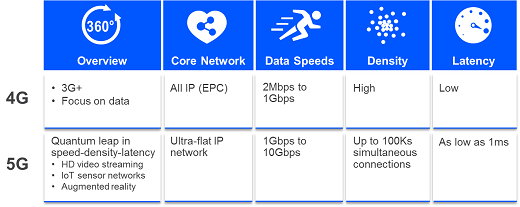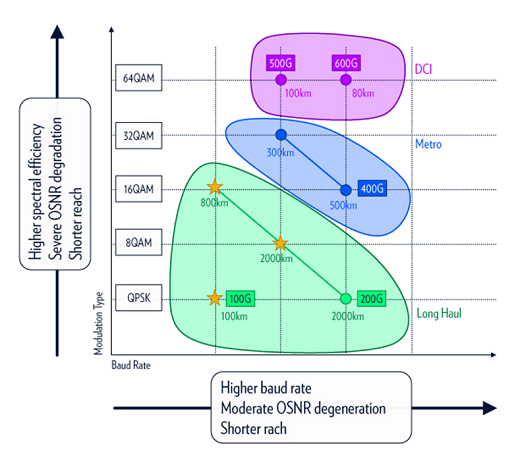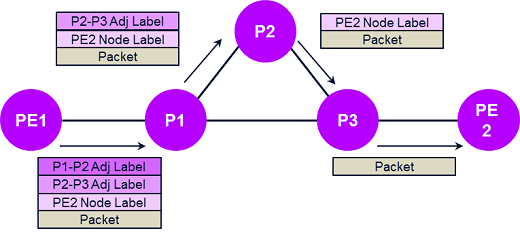Perhaps you’re at a party or a family gathering. Perhaps you’re on a crowded plane or in a cab or Uber with a talkative driver. Wherever you are, when strangers meet the question inevitably comes up, ‘So what do you do?’ For those of us in telecommunications, we have a choice of answers depending on the audience. I like to start with ‘I work in telecommunications’ and see if I get blank stares or knowing nods before trying to go any deeper. On those occasions when knowing nods trump blank stares, the conversation almost always moves to, ‘So what’s the next big thing in technology?’
Telecommunications as a field is hot these days, with new innovations in multiple arenas coming rapidly, one upon the other. After the dark years following the dot-com crash, this is again an exciting time to be in the field. And that means that there are some genuinely interesting new things on the horizon. Perhaps not all of them will be of interest to the average partygoer, but they should be of interest to the average reader of this publication.
Demand: there ain’t no stopping us now
Most articles describing the inevitable demand scaling in networks begin and end with video. Video is indeed straining the bandwidth demands of networks that were originally designed for much less bandwidth-intensive media, and it’s not just Netflix video. A prime example is web-enabled video surveillance cameras that are being deployed in remote locations. These are locations that typically required less than 1Mb/s of bandwidth and now are requiring many times more, especially for high-definition video. These examples are numerous and well-known, so there’s no need to talk any more about them here. Suffice it to say that more bandwidth requirements will be coming in 2018.
The one question that comes up the most from non-telecom peers is about the next evolution of mobile bandwidth. 4G has been around for a while now, and incremental upgrades are being announced regularly. However, the move to 5G will be something else entirely. 5G isn’t so much about increased bandwidth – although that will be a big part of the upgrade. 5G is all about the services that will be deployed on mobile networks. These include such processing intensive and latency sensitive applications as mobile edge computing, enhanced reality, and smart transportation. 5G will put requirements on the rest of the network, especially the mobile backhaul network, that were not there for previous generations of wireless technology. Latency requirements will push networking equipment closer to the edge. Centralised architectures will increase the need for mobile fronthaul, where the radio signals are collected in common points rather than being processed entirely at the cell site. Multi-use networks will require differentiation so that, for example, the traffic required to keep cars moving on a busy street is assigned a different set of parameters than back-up data from remote weather stations. This differentiation, also known as network slicing, will be a big topic in the next year among those who hope to capitalize on the 5G revolution.

Figure 1: The move to 5G will be all about the services, not just about adding more bandwidth.
The Internet of Things (IoT) is also a big topic among network prognosticators. In the next year, the number of smart devices at the edge of the network will continue to proliferate. This includes the often-mentioned internet-enabled home appliances, as well as more strategic elements such as air quality monitors, remote sensors, tracking devices, and many others that are being invented in start-up boiler rooms. While most of these devices do not require a lot of bandwidth, they do all require connectivity. A network that can handle many thousands of connections, many of them over mobile radios, is a different animal from the traditional cell network (and another driver for the move to 5G). Not only will connectivity be an issue, but security concerns will rise proportionately as all these new access points into networks become available. Security will be a part of every telecom discussion in 2018.
Optics: faster and faster
Those of us who have been in the industry for a while remember when 10G speeds were introduced. The equipment was large (usually a full bay) and the users were long-haul network providers. Today, 10G is ubiquitous even in the access, and 10G is a standard interface in routers, switches, and other data centre equipment. Some communications providers have even made the economic decision to widely phase out speeds lower than 10G anywhere on their fibre network past the initial network interface device (NID), figuring that 10G prices were low enough to justify a single technology choice rather than supporting multiple low-speed rates.
With 10G becoming a commodity, 100G has moved into the position that 10G used to hold. 100G became the go-to data rate for long-haul providers a few years ago and is now moving into the metro and inside the data centre – much more rapidly than 10G ever did. The breakthrough that allowed 100G operation over distance (multi-level, multi-phase transmitters and coherent receivers) scales well to other rates, and higher rate optics are being introduced at a regular clip. 200G is now generally available from many vendors and 400G products are being announced and trialled.
Meanwhile, the data centre folks who don’t always need the distances and strict tolerances of telecom-grade optics are making their own push to higher speed optics in convenient pluggable formats. The road to terabit optics is clear, and we will probably get there faster than we expect. The New Year will be an exciting one for high-speed optics, both in coherent long-haul and in the short-distance data centre model.

Figure 2: New innovations in modulation formats will mean more bandwidth per wavelength.
With these higher speed optics, there have been some related technical challenges. The foremost issue is the static 50GHz spaced grid that was defined for dense wavelength-division multiplexing. DWDM is primarily a metro or long-haul technology allowing more bandwidth on a single fibre, and has revolutionised the way that optical networks are designed. Having a standard grid for wavelength spacing has meant interoperability among vendors, technology choices, and huge innovations in dynamic optical networking. However, the 50GHz spacing starts to have problems when single-wavelength speeds go beyond 100G. The bandwidth spacing required for higher speed signals will exceed 50GHz, requiring a new grid.
A standard ‘flexgrid’ spacing has now been defined allowing each wavelength to occupy a scalable group of 12.5GHz chunks of spectrum. If a 400G signal requires 75GHz spacing, it can be assigned six 12.5GHz chunks. 10G and 100G signals can continue to use 50GHz (or even less) bandwidth. Some 200GHz solutions fit into the 50GHz spacing while others do not, depending on the modulation and receiver capabilities. Flexgrid capability is nearly universal in modern reconfigurable optical add-drop multiplexer (ROADM) hardware now, but programmable flexgrid mux/demuxes are less common, which means that upgrading an entire network to flexgrid could be complex and require swapping out some passive components. Also, managing flexgrid can be complicated, as the chunk definitions need to be coordinated across spans. However, as optical speeds increase, these are all problems that optical networking vendors will need to solve. Expect to see some software-defined networking-based proposals, demonstrations, and solutions in the next year.
As mentioned above, security will be a part of every telecom discussion in 2018, and the optical domain will be exempt from that discussion. When optical encryption first came on the scene, many viewed it as a solution looking for a problem. With the security revelations of the past few years, more and more businesses and network operators are realising the value that optical layer encryption can provide. Optical layer encryption is lower latency than traditional Layer 2 / Layer 3 encryption and optical layer encryption hides even the addressing schemes. Encrypted wavelength services were first introduced by major telecom providers in 2017. Expect to see much more in 2018.
Packet: improved versatility
Packet-based networks have evolved from the early days of multiple competing protocols to a nearly ubiquitous blanket of Ethernet, IP, and MPLS. However, even within that largely coherent group of technologies, tweaks are being applied that are enabling greater flexibility, reliability, and security.
Carrier Ethernet can hardly be considered a new technology in 2017, as it has become the go-to technology for service provider Ethernet. However, Carrier Ethernet is now being applied to a wider variety of technologies, either through direct adaptation of legacy equipment or circuit emulation of legacy services. The management and service-level insights that Carrier Ethernet provide will allow Ethernet to start taking over from TDM in many more commercial services. Likewise, connection-oriented technology at the more scalable MPLS layer is gaining acceptance in a wider variety of network applications. MPLS-TP (Transport Protocol) has been standardised for several years and widely used in Asia, but is now starting to see increased application within other markets due to its simplicity, deterministic qualities, and ability to co-exist with IP/MPLS networks.
However, the new packet technology that will be making the most impact in 2018 will probably be Segment Routing. In Segment Routing, also sometimes referred to as Source Routing, an external path computation engine (PCE) assigns the packet labels for an entire path at the source, and these labels are popped off in sequence as the packet traverses the network. At each node, the hardware only needs to know what labels are assigned to what port. There are no complex routing tables or discovery protocols to maintain locally. Segment Routing is ideally suited for an SDN-enabled network with an external control plane and has great potential to reduce the operational complexity and hardware costs of the MPLS network. Service providers have shown great interest in the standards process and early versions of equipment were announced in 2017. In 2018, expect to see Segment Routing announcements from carriers and vendors alike.

Figure 3: With segment routing, the route can be pre-planned via SDN and programmed into the packet at the source.
Network intelligence: it’s finally here
In a recent discussion with graduate students about to enter the workforce, I was asked what areas would be the best to focus on for a career in telecommunications. My answer was software. The real changes in communications over the next year will be coming in the control and management of services on telecom networks. The promise of SDN and NFV has not yet been fully realised, although great strides are being made in some corners. In 2018, networks we be ever more intelligent and responsive thanks to improvements in standards and innovations in software capabilities.
In 2017, we saw some demonstrations of what SDN will be able to achieve. Carriers started introducing true service-on-demand capabilities, building networks that can respond intelligently to service-oriented requests for bandwidth and connectivity. In 2018, those initial successes will be joined by many more as SDN standards continue to solidify. Multi-layer, intuitive software and hardware platforms will be introduced by more vendors, and interoperability efforts based on open standards will start to move from the demonstration stage to the deployment stage at more and more carriers.
The benefits of SDN go far beyond just fast service provisioning. Once network intelligence is integrated and programmable interfaces are standardized, innovative technologists will find ever more interesting and complex ways to take advantage of network programmability. Don’t expect too many of those applications to be mainstream in 2018 as SDN is not moving quite that fast yet, but do expect to start seeing early announcements of interesting SDN applications and plenty of slideware about more complex applications to come.
Conclusions
Overall, 2017 has been a good year for the advancement of telecommunications technology. Across all layers of the network, technology innovations are improving the capabilities and capacities of telecom networks. For 2018, expectations are high that the industry will continue to build on those capabilities and introduce even more exciting technologies. It is once again an exciting time to be in telecommunications. Be sure to tell that to all the people you meet at parties.
• Scott Wilkinson is senior marketing portfolio director of ECI Telecom


